The government appears to be edging away from the closure of the renewable energy target (RET) scheme, with the education minister, Christopher Pyne, reportedly giving his full support to the scheme at a private meeting.
This comes as pressure mounts on Labor to reach a “compromise” position on the issue. However, Labor appears unlikely to compromise its opposition to any change to the RET.
“The Abbott government shattered any notion of bipartisanship on the RET when it walked away from its election commitment to keep the existing 41,000 gigawatt hours by 2020 target,” said Mark Butler, Labor’s environment spokesman.
Guardian Australia understands that Pyne told a group of solar panel installers that he did not want to see any change to the RET, which requires that 41,000 gigawatt hours of Australia’s energy comes from renewable sources such as solar and wind by 2020.
Cabinet is divided over what to do with the RET, with Tony Abbott understood to favour its closure, while others, such as the environment minister, Greg Hunt, advocating that it be scaled back.
The government is currently considering a review of the RET by businessman Dick Warburton, which recommended that the scheme either be shut to new entrants or closed until energy demand begins to expand, which is not likely in the foreseeable future due to excess capacity in coal-fired power.
Originally intended to comprise 20% of Australia’s energy, the 41,000 gigawatt hour goal is more likely to equate to 26% due to an overall fall in electricity demand.
The clean energy sector has warned that thousands of jobs and billions of dollars in investment will be risked if the RET is pared back or closed.
The government appears to be shifting towards what it sees as a compromise position which would see the RET scaled back to a “real” 20% (actual share of electricity demand rather than what was expected by 2020) with pressure now being exerted on Labor to negotiate.
Labor, Greens and the Palmer United party have all voiced their opposition to any change to the RET, meaning the government would not have enough votes in the Senate to alter it. The RET, which requires energy producers to buy clean energy certificates to meet the target, was introduced by John Howard’s government and enjoyed bipartisan support at the last election.
Ian Macfarlane, the industry minister, said the government was giving the Warburton report “full consideration” before stating its view.
“We’ll discuss it with anyone, quite frankly,” he said.
“What we need to do is come to an outcome because if we continue with a period of hiatus where Labor is not prepared to negotiate anything, then in the end it will be the renewable energy industry that loses. We need to resolve this issue.”
Hunt said the government was letting the report “sit on the table”, calling on Labor to discuss the issue with the Coalition.
“We’re carefully considering it but at the end of the day there is a long-term clear future for renewable energy and the Renewable Energy Target, but it’s about finding balance and we would openly offer to, and invite the ALP to, be part of this discussion,” he said.
“This is a chance to work towards a bipartisan approach and protect the industry long-term. We will talk with them, we’re happy to work with them and in the long-run for the country, stability in this sector is important.”
In an opinion piece for the Australian Financial Review, Jennifer Westacott, chief executive of the Business Council of Australia, also pressed for the major parties to agree a revised RET.
“The best outcome for the community, business and the renewable energy industry would be bipartisan support for a form of a true 20% RET that doesn’t risk falling short of its megawatt target at a huge cost to consumers,” she wrote.
The renewables industry has already warned that investment into the sector has ground to a halt due to uncertainty caused by the RET review. A vigorous defence of the RET, run by the Solar Council, is targeting the 20 most marginal Coalition electorates in the country.
Analysis released by the Clean Energy Council on Monday showed that $15bn in investment would be lost if the RET was cut. The NSW economy would be worst off among the states, according to the analysis, losing $4bn, while Victoria would lose out on nearly $1bn. Queensland leads the way in terms of clean energy employment, with 4,600 jobs in solar power and more than 6,500 across the state’s renewable energy sector.
Kane Thornton, acting chief executive of the Clean Energy Council, said: “The RET review panel’s own analysis showed there is no benefit to consumers from slashing the Renewable Energy Target. We should leave it alone to get on with creating jobs and investment across the country.”
Asked about the meeting with solar installers, a spokesman for Pyne said: “The minister was asked about the renewable energy target and indicated that the government was looking at the Warburton report and considering its options, but no one should assume the RET would be abolished.”
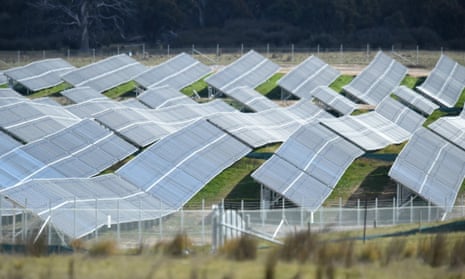
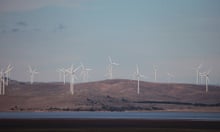
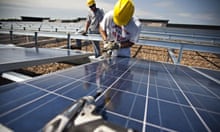

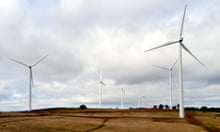
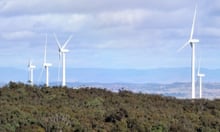


Comments (…)
Sign in or create your Guardian account to join the discussion